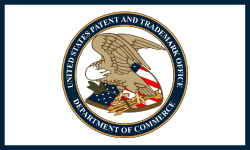Maybe We’ll Actually Receive an Explanation from the USPTO
The USPTO had a lot of patent examiners (8,568 to be exact) reviewing a lot of patent applications (462,000 new applications received last year). Those examiners make thousands of determinations every day as to whether inventions are patentable or not. Aside from forms, wording, fees, and whether the invention is of a type that is even can be the subject of a patent, the examiners make their decisions based on three criteria. To paraphrase:
(a) Does the invention have ‘utility;’ that is, does it do something?
(b) Is the invention ‘novel;’ that is, has exactly the same invention been done before?
(c) Is the invention ‘non-obvious;’ that is, would the invention be obvious to an imaginary person “having ordinary skill in the art?”
An invention must pass all three criteria to qualify for a patent. Criteria (a) and (b) are fairly straightforward – either the invention does something or it doesn’t, and either the invention has been done before or it hasn’t. The third criterion is the problem. Note that the definition of ‘obvious’ (created by Congress) includes the defined term – an invention is ‘obvious’ if it’s obvious. Not helpful.
In the absence of meaningful guidance from Congress, the courts have stepped in, notably the U.S. Supreme Court in 2007. The Supremes concluded that the analysis of whether an invention is ‘obvious’ must be flexible and consider all angles, effectively punting the question back to the lower courts. However, the Supreme Court did say that “…[t]o facilitate review, this [obviousness] analysis must be made explicit.”
Seventeen years later, there have been many lower court decisions on obviousness, and this week the USPTO issued guidance to patent examiners summarizing those decisions and instructing patent examiners on how they should make decisions on obviousness. Remember that the USPTO is merely summarizing conclusions of existing court decisions. It’s not making new regulations or other new laws. Some of the highlights:
- In perhaps the most important statements in the guidance, the USPTO reiterates that “[t]he key to supporting any [obviousness] rejection is the clear articulation of the reasons(s) why the claimed invention would have been obvious. … Although this approach is flexible, a proper obviousness rejection still requires the [examiner] to provide adequate analysis based on evidentiary support.” Hopefully, this will spur the USPTO to require examiners to actually come up with reasons why an invention is obvious, rather than simply making conclusory statements.
Other highlights:
- In deciding whether a new invention made from a combination of old elements is obvious and hence unpatentable, the examiner must consider any evidence presented of what the imaginary ‘person having ordinary skill’ would know and consider the creativity of such a person.
- In deciding whether the artificial ‘person having ordinary skill’ would combine two (or more) prior art references to find the invention obvious, the examiner may consider reasons to combine the references, such as market forces, design incentives, ‘interrelated teachings of multiple patents,’ and any need or problem known in the field.
- The examiner can fill gaps in the prior art by asserting common sense and common knowledge of the artificial ‘persons having ordinary skill.’ However, “…‘common sense’ – whether to supply motivation to combine or a missing limitation – cannot be used as a wholesale substitute for reasoned analysis and evidentiary support” for an obviousness rejection.
— Robert Yarbrough, Esq.


